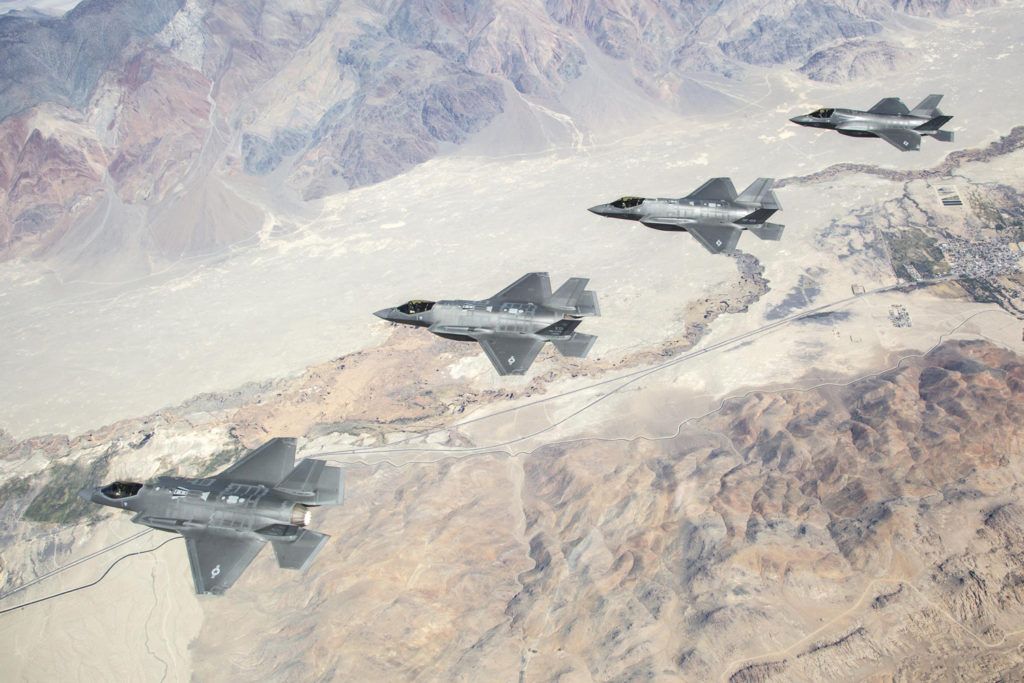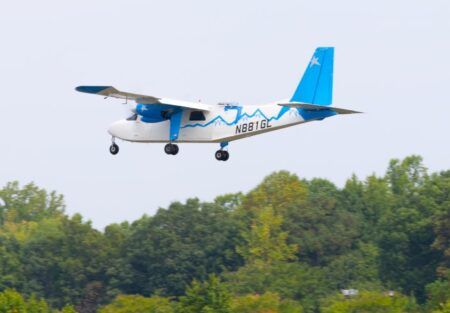All three variants of the F-35 Joint Strike Fighter are being used by the 461st Flight Test Squadron in recent multi-ship testing, which employs four or six jets to ensure communication systems between the planes are working properly and accurately.
The F-35 contains state-of-the-art tactical data links that provide the secure sharing of data among its flight members as well as other airborne, surface and ground-based platforms required to perform assigned missions.
“One of the primary reasons we do multi-ship testing is to ensure data is shared appropriately between aircraft in order to maximize lethality and survivability,” said Major Raven LeClair, 461 FLTS, F-35 test pilot.
“The F-35 uses MADL [multifunction advanced data link] to share information on air and ground threats in order to more effectively target. This is especially applicable to one of the F-35’s primary missions – finding and killing advanced surface-to-air missile systems.”
The MADL is a high-data-rate, directional communications link that allows secure transmission of coordinated tactics and engagement for the fifth-generation fighter when operating in high-threat environments.
LeClair said his squadron is specifically testing the ability to find SAM systems using a capability called Enhanced Geo Location.
“After the threat is accurately located, it can be jammed and targeted.”
LeClair added that the MADL architecture is divided into flight groups so it is important to test the capability to pass data between flight groups using four or six aircraft to ensure system accuracy, stability and usability during large force exercises and actual combat.
The 461st FLTS and Joint Strike Fighter Combined Test Force at Edwards Air Force Base in California conducts developmental test and evaluation of the F-35 with all three variants – the A, B and C models. Developmental test and evaluation will make way for future operational tests.
December 13, 2016





